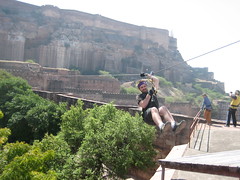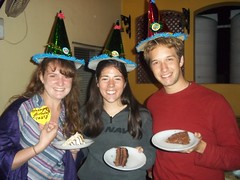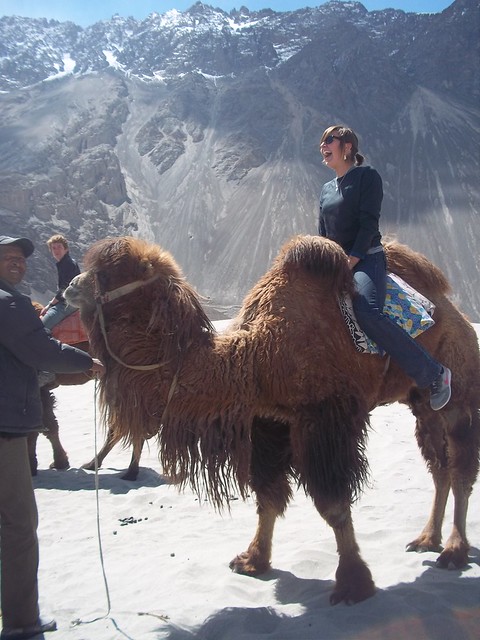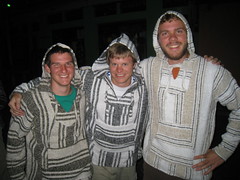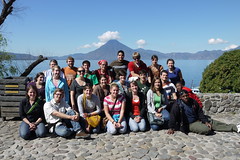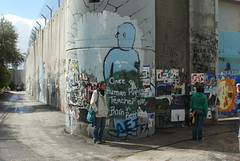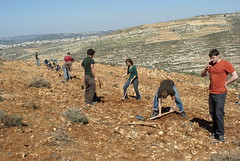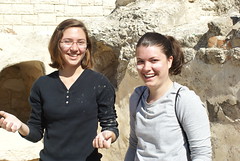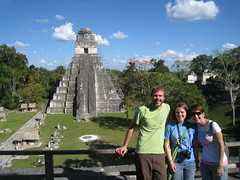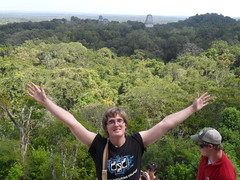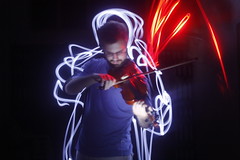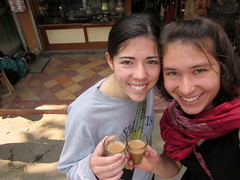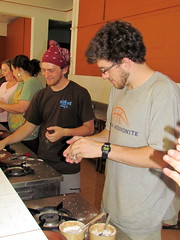I am not sure that the best cup of coffee in India could beat the worst gas station coffee from the U.S. in a taste test. Just as Indian food in the U.S. only tastes half as good as a generic curry in India, the quality of many U.S. staples gets lost in translation/transportation on their way from the west to the east. The pasta sauce here tastes like ketchup, the french fries are distinctly Indian tasting, and the coffee is weak, artificial, and sweet. I am someone who needs to savor smooth, dark strong coffee on a daily basis. My search for coffee in this Chai fueled country has taken me to some interesting places and has provided a handful of learning experiences.
One might ask, “why not drink chai?” and I would respond “I do” But chai is sweet, creamy, and not as potent as coffee. I enjoy drinking chai, but it does not satisfy my thirst for coffee quite like coffee does. I thought my thirst would be satisfied in Bodhgaya when I saw coffee on our hotel’s menu. This coffee turned out to be made from an instant powder like most of the coffee we are offered here. It is widely available, but is often sweeter than chai and not as tasty. Chai beats instant coffee any day.
By the time we reached Kolkatta, I had not had coffee since I drank my last precious sip of Dunkin Donuts in Dulles airport. As I was walking through the streets trying to avoid the beggars and hawkers, I spotted a sign that advertised real Italian coffee in a shop called Lavazza. I immediately abandoned my original plan and ducked into the starbucks-esque store in hopes of scoring a good quality cup-o-joe. Immediately upon stepping through the door I felt as if I was back in the states. With exception of the Indian customers and the bad grammar on the signs, Lavazza’s interior could have been that of any US coffee chain. It turns out that Lavazza is a chain based in India that has recently opened branches in India. Globalization at work. But my experience has been that globalization is not laying-waste to indigenous cultures as those of us in my “Globalization and Justice” class had feared. Western products are certainly available. I was able to find a decent cup of coffee, but it was difficult. I could, though, find a cup of chai within 5 minutes at pretty much a moments notice for less than 5 rupees. McDonalds is available, but it costs ten times more than authentic Indian food from the street. Not only is it not as desirable to Indians, but it’s also way more expensive. In a country of more than a billion people, a few will develop a taste for coffee and western ideals, but cultures have an enormous mass. There will be McDonalds and coffee, but they will never have the momentum to substantially move the Indian population away from their Chai and Curry.
I think this idea can be applied to larger cultural trends. Capitalist economics are certainly in place, but well within the Indian culture. The desire to employ a large number of people seems to supersede the efficiency that is sacred in western economics. It would not surprise me to see three people working together to brew me a cup of coffee: one to grind the beans, one to turn on the machine, and one to pour the product into my cup. It takes a lot of jobs to employ 1 Billion people. There seems to be a number of traditional values that make the economic system uniquely Indian.
This tension is not limited to economics either, but also comes into play in the culture. Just tonight I enjoyed the best cup of coffee so far in India. This restaurant, run a by a chef who has cooked in a number of European countries, has been an oasis for our group. The pasta sauce at this restaurant does not taste like ketchup. This restaurant is one restaurant that serves western food on a street full of Indian restaurants. I sat there on the terrace drinking real imported Italian coffee and watched the opening ceremonies on the “Holi” celebration of color. This uniquely Indian holiday is famous for the “color fights” where children throw brightly colored powder at passersby. This opening ceremony was marked by fireworks, bonfires, and Hindu traditions that I cannot begin to understand. In the square people were dancing to Hindi music over the loud speakers. At one point I recognized Shakira’s “My Hips Don’t Lie” and my friends and I lit up at the familiar beat of this American hit, but the rest of the night we were serenaded by blaring Hindi music. Looking out from my western bubble I comprehended nothing on the street below.
The other day I got up from breakfast leaving some Starbucks “real” instant coffee that my mom has sent me in a care package in my mug. One of our leaders who is known for his humor teased, “you better drink that, there are sleeping children in India”. This did not bother me because I know that children in India are not asleep thanks to some caffeine deficiency; I wouldn’t be surprised if Indians drink as much Chai as we drink coffee. This notion quelled some of my fears about the fate globalization has in store for the world’s local cultures.
-Ben Bailey
Today began with jeep rides in the desert. Our guides rode up front, while we all sat in open seats on the back. We passed many small houses and mud huts with thatch covered roofs, standing starkly against the barren landscape. How do people survive out here? Vegetation consists mainly of small, thorny plants and scrub-brush; the rest is red rock and sand. We stopped briefly at one hut where a man (the only blacksmith in the village) demonstrated the art of metal work. His wife diligently kept the fire going as he skillfully pounded a knife out of an old car part. About a mile farther, we visited a villager’s home. Nearly 25 children crowded around us, their mothers keeping an amused, but watchful eye from afar. We were shown the kitchen building, and the circular hut beside it that functioned as both a living room and sleeping quarters for its occupants. The courtyard area between these buildings had been recently resurfaced with a fresh layer of cow dung, which forms a very hard shell and is easy to keep clean. We were led around the corner of the house, and were met with a chorus of 7 bleating goats, including three babies only four days old. Beside them lay an upturned metal cooking bowl, which wouldn’t be so unusual except that it was two meters in diameter! This bowl is used at weddings and other special occasions to cook food for the entire village. Once back on the jeeps, we drove down several nearly vertical sand dunes, and I was sure each time that we were plunging to our deaths. We sped passed a wild peacock, and several antelope bounded away at our approach. We got out of the jeeps for a while, and ran/jumped down the dunes for as long as our bare feet could handle the heat. This afternoon I got sunburned by the pool, and in the evening we climbed (in pairs) on top of single-humped camels to carry us out to the Desert Camp. The camels knelt in the sand while we climbed on their backs, but they lurched to their feet with such ferocity that Steve and I nearly toppled over our camel’s head. A strange feeling riding atop a camel, something like riding a dinosaur I imagine. Our ride to the desert camp lasted about an hour and half, and though it was an awesome experience, I wouldn’t recommend camels as a primary mode of transportation. They’re lacking significantly in the comfort department. We arrived at the camp in good spirits, and changed swiftly into our nicest Indian garb, red turbans and all (they are very popular here in Rajasthan). We watched, and even participated in, a dance performance, and feasted on a delicious, traditional Rajasthani meal in the white dinning tent. It was a beautiful evening, and the desert had cooled to a perfect temperature. After we finished eating, we walked back outside, beneath a sky now filled with moonlight and stars. I pulled the tail of my turban down over my nose and mouth as the jeeps tore off back down the sandy rode to our hotel. Orion’s Belt glistened just above our heads, and the desert glowed in the cool light of the moon. I will sleep well tonight.”
-Josh Kanagy
This past week we had the opportunity to visit an organization called St. Matthew’s in Udaipur, Rajasthan. St. Matthew’s is comprised of an English Medium School (grades 1-12), a church, an orphanage, and a seminary. We visited the school one morning and organized games for approximately 150 students, grades 6 through 8. We had a blast interacting with the kids, playing games, and testing out some of our Hindi language skills. The students come from varying religious and socioeconomic backgrounds. St. Matthew’s accepts many disadvantaged and slum children and provides a quality English education at a subsidized cost. For these kids the cost of the school is one fourth of the average cost for an English Medium school in India. An English education is extremely important in this day and age for Indians who are looking for employment. The school started off with 5 students around 30 years ago and has grown to 850 students today. It’s always refreshing to see thriving non-profit organizations such as this amongst the poverty and hardships that we’ve witnessed everywhere in India. Through generous donors and faithful teachers the school has been successful for many years now in breaking the cycle of poverty for many low income families.
After spending some time in the morning with the students at St. Matthews we walked over to the seminary which was located near the grade school. We sat in a room with a group of seminary students and we were talked to by the director of the seminary. After an explanation of the history and the mission of the organization, a discussion was opened up between us and the seminary students. It was fascinating hearing stories of how these students became followers of the Christian faith. Almost all of the students were first generation believers. They came from mostly rural areas in northern India. Many of the students have become Christians after witnessing healings done by Indian Missionaries (either physical healings or healings from spirit possession). Despite the obvious fervor of these young Christians in their faith, it was evident that many of them face many hardships because of their beliefs. When converting to Christianity in rural India, many people experience persecution from fellow villagers and abandonment from their families. It was interesting thinking about how different of a faith journey that these people have had from my own. It makes me appreciate the freedom I have to practice my own faith in North America. It does however make me somewhat envious of the excitement and extremely strong faith that these first generation believers have. Overall it was a great visit to St. Matthew’s and I was encouraged by the positive things that I saw being done by the church in India.
-John Reesor
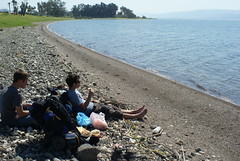 While many of our group chose to plan ahead and have a relaxing time, James, Tim, and I decided to leave much of our trip open-ended. The first day we spent at Tim’s uncle’s house in a town near Tel Aviv. All the people in that family were characters, and we had a good time listening and learning about the life of an Israeli family. In particular, Tim’s uncle Jon had many insights about Israeli culture compared to American culture. We then took a combination of busses to get to Nazareth to pick up some camping gear and pick up some tips from Dave Landis, and then the shores of the Sea of Galilee. In three days we hiked from the southern tip to the northern tip. Contrary to what you might think, each day was full of varied experiences. However, there was always one constant. Pita. It was our main source of energy, and despite the quantities eaten none of us are sick of it.
While many of our group chose to plan ahead and have a relaxing time, James, Tim, and I decided to leave much of our trip open-ended. The first day we spent at Tim’s uncle’s house in a town near Tel Aviv. All the people in that family were characters, and we had a good time listening and learning about the life of an Israeli family. In particular, Tim’s uncle Jon had many insights about Israeli culture compared to American culture. We then took a combination of busses to get to Nazareth to pick up some camping gear and pick up some tips from Dave Landis, and then the shores of the Sea of Galilee. In three days we hiked from the southern tip to the northern tip. Contrary to what you might think, each day was full of varied experiences. However, there was always one constant. Pita. It was our main source of energy, and despite the quantities eaten none of us are sick of it.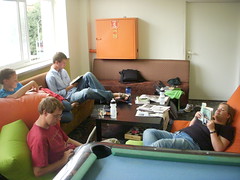 Freedom. That’s what free travel is. This past week we all finally had absolutely complete freedom over our schedules and it was utter bliss. The group split into several smaller groups with some going to Turkey, some to Egypt, some hiking in Israel, Aly stayed with a somewhat local Jewish family, and Jamila, Joel and I went back to Palestine for a few
Freedom. That’s what free travel is. This past week we all finally had absolutely complete freedom over our schedules and it was utter bliss. The group split into several smaller groups with some going to Turkey, some to Egypt, some hiking in Israel, Aly stayed with a somewhat local Jewish family, and Jamila, Joel and I went back to Palestine for a few
